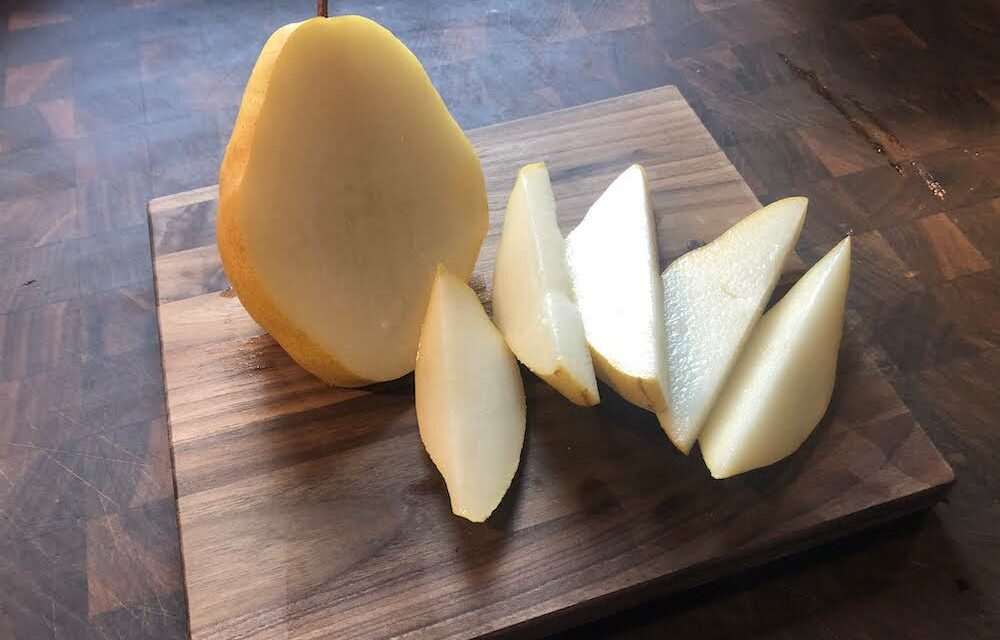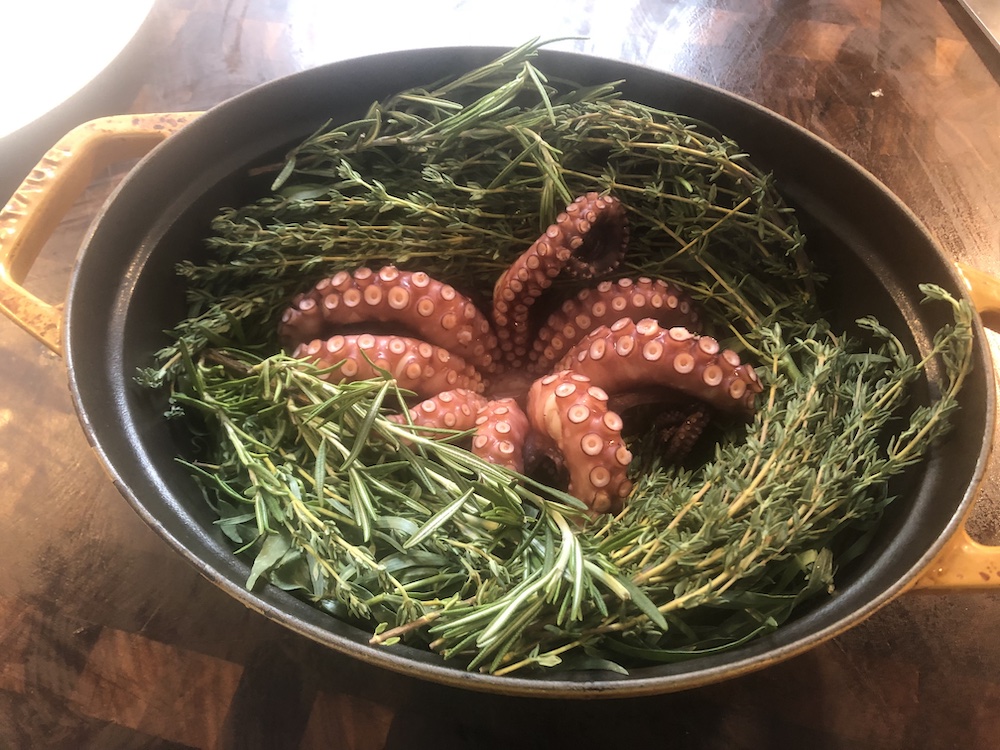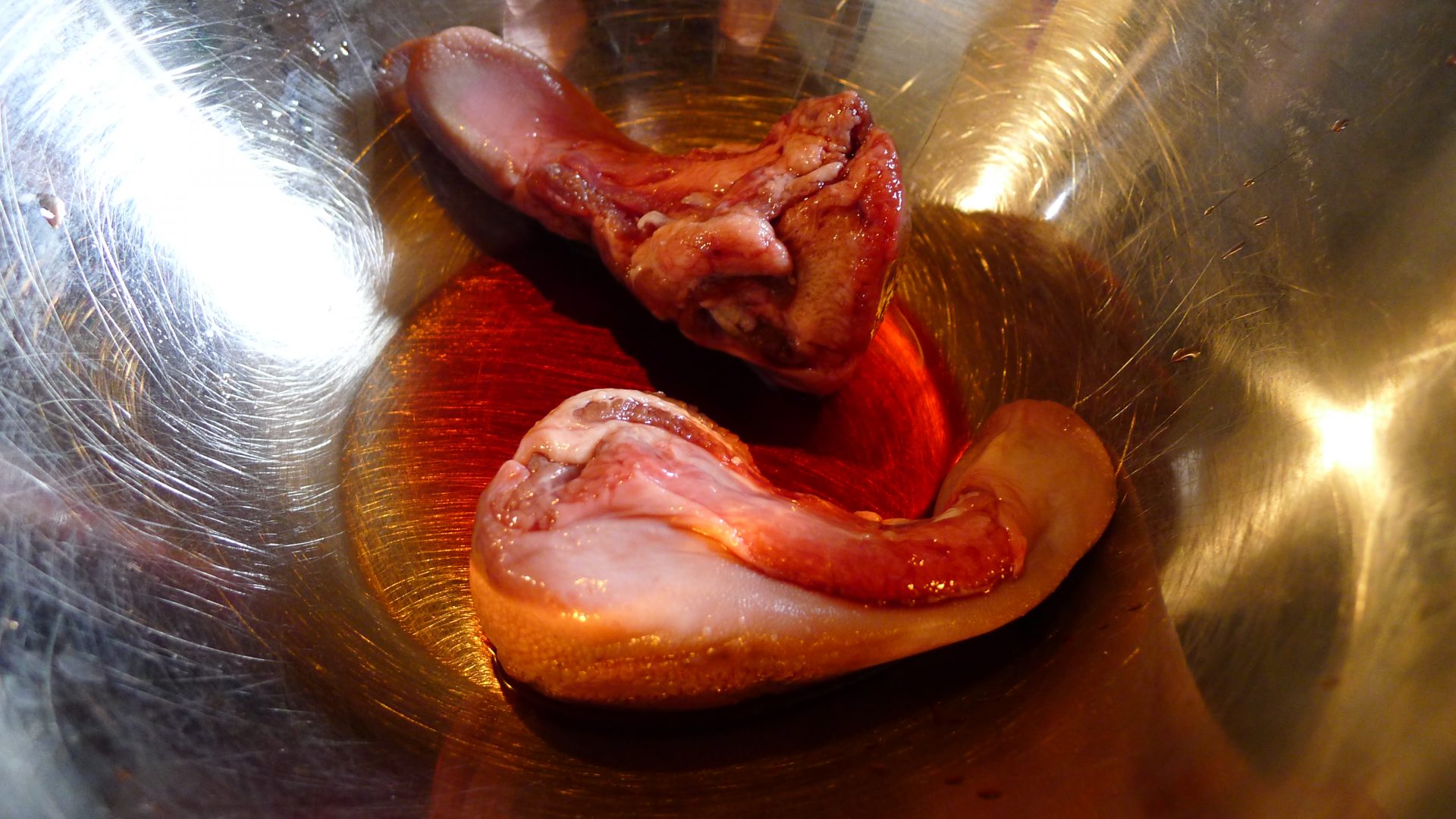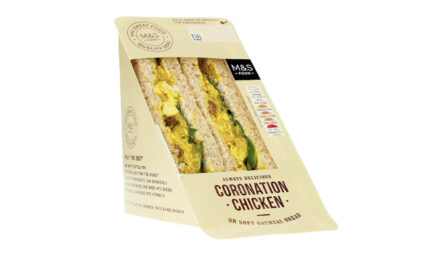One would think that after five decades of time on this planet, food epiphanies would be few and far between, and yet I’m continually discovering new aromatic and taste sensations, such are the multitudinous delights of the gustatory world.
Although I have always throughly enjoyed them, it was just the other week that I decided Ontario pears were perhaps the most wonderful tasting fruit I had ever experienced.
As I often do when I require some sage wisdom re: anything culinary, I asked Toronto Chef (and living-legend) Chris McDonald for his thoughts on this wondrous fruit, and unsurprisingly he had quite a bit to opine:
Pears can be luscious: A good ripe pear, eaten out of hand with gusto leaves its juices running down your arm.
Pears are delicate in both flavour and application; pears require more careful handling than, say apples, and compared to that more mundane fruit, they draw attention to themselves narcissistically.
They ares sensual in both flavour and texture, they can often seem almost tropical, reminding me of litchis.
They can also be inscrutable: rotting from the centre outward, even ones past their prime can trick you into selecting them.
We all know that in the kitchen, the simplest preparation can be the most difficult to get right. I think that the ultimate pear preparation is sorbet, but the fruit and its handling have to be impeccable.
Other than tomatoes, I cannot think of another fruit that displays as much variation among its varieties: To me, Bartletts can be the most sensuous, almost intoxicating.
I feel that Chef McDonald and I are on the same page about pears then…
Related to the rose, the pear has its origins somewhere in eastern Asia, before spreading all across Europe, and was one of the very first fruits transplanted to the Americas. It’s ferociously mutable, hence it has produced many thousands of varieties all by itself.
The five most commonly grown in Ontario are Bartlett (the most prolific worldwide, sweet and soft), Clapp’s Favourite (exceptional sweetness, turning golden yellow when ripe), Anjou (egg-shaped, aromatic, mildly sweet), Bosc (elegant and elongated with a slender neck, fine textured, russet coloured, still somewhat crunchy when ripe), and Flemish Beauty (roundish, thick clear yellow skin speckled with red when ripe, tender cream coloured flesh).
The best pears I had this year were something altogether different (pictured above), the Cold Snap variety from Oak Lane Orchards just outside of Thornbury. They only have one acre of pears there to supply their farm market, as they specialise in apples, growing a terrific range of varieties. But those pears that they do grow… Oh boy… they are seriously something else. I’d suggest you give them a visit sometime, as it’s a great little place with some lovely people.
As it turns out, Cold Snap (originally named the Harovin Sundown) is one of Canada’s newest varieties, bred by Agriculture and Agri-Food Canada’s research station in Harrow, Ontario to have a higher resistance to disease and a longer storage life than most, keeping them amazingly fresh throughout the winter season. And it’s interesting, as I had noticed that they weren’t going bad despite the fact they had been in our fruitbowl for some time… they were actually improving with time… ripened to absolute perfection. It’s also Canada’s first branded pear, licenced by the not-for-profit Vineland Research and Innovation Centre.
They were still rather firm when fully ripe, the skin almost snapping back from the unctuous flesh as one took a bite, the citrus-tinged juice simply pouring out of the fruit and right down my chin (and onto my newly laundered white shirt that day). The gorgeously soft and giving granular texture was a true delight. I’m literally drooling just recalling the details of that specific gastronomic moment.
So it goes without saying, I had a veritable food epiphany with these delectable Cold Snap pears.
I’d highly recommend you seek them out, and with 75,000 trees having now been planted across Ontario and Nova Scotia, it shouldn’t be too difficult for you to track them down at a farmers’ market near you.







